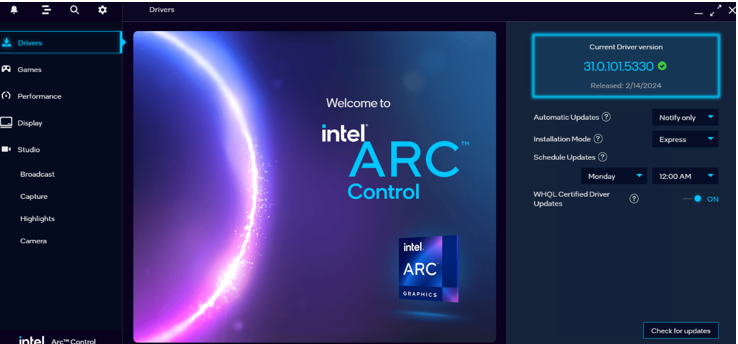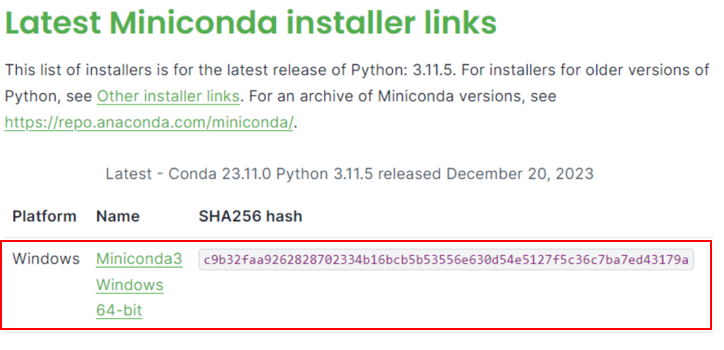* quick start for windows igpu * Update install_windows_gpu.md * Update install_windows_gpu.md * Update install_windows_gpu.md * Update install_windows_gpu.md * Update install_windows_gpu.md * Update install_windows_gpu.md * update the demo.py * Update install_windows_gpu.md * Update install_windows_gpu.md * fix image position typo * Update install_windows_gpu.md * update pip install command --------- Co-authored-by: Shengsheng Huang <shannie.huang@gmail.com>
5.3 KiB
Install BigDL-LLM on Windows for Intel GPU
This guide applies to Intel Core Ultra and Core 12 - 14 gen integrated GPUs, as well as Intel Arc Series GPU.
Install GPU driver
-
Download and Install Visual Studio 2022 Community Edition from the official Microsoft Visual Studio website. Ensure you select the Desktop development with C++ workload during the installation process.
Note: The installation could take around 15 minutes, and requires at least 7GB of free disk space. If you accidentally skip adding the Desktop development with C++ workload during the initial setup, you can add it afterward by navigating to Tools > Get Tools and Features.... Follow the instructions on this Microsoft guide to update your installation.

-
Download and install the latest GPU driver from the official Intel download page. A system reboot is necessary to apply the changes after the installation is complete.
Note: the process could take around 10 minutes. After reboot, check for the Intel Arc Control application to verify the driver has been installed correctly. If the installation was successful, you should see the Arc Control interface similar to the figure below

-
To monitor your GPU's performance and status, you can use either use the Windows Task Manager (see the left side of the figure below) or the Arc Control application (see the right side of the figure below) or :

Setup Python Environment
-
Visit Miniconda installation page, download the Miniconda installer for Windows, and follow the instructions to complete the installation.

-
After installation, open the Anaconda Prompt, create a new python environment
llm:conda create -n llm python=3.9 libuv -
Activate the newly created environment
llm:conda activate llm
Install oneAPI
- With the
llmenvironment active, usepipto install the OneAPI Base Toolkit:pip install dpcpp-cpp-rt==2024.0.2 mkl-dpcpp==2024.0.0 onednn==2024.0.0
Install bigdl-llm
-
With the
llmenvironment active, usepipto installbigdl-llmfor GPU:pip install --pre --upgrade bigdl-llm[xpu] --extra-index-url https://pytorch-extension.intel.com/release-whl/stable/xpu/cn/Note: If there are network issues when installing IPEX, refer to this guide for more details.
-
You can verfy if bigdl-llm is successfully by simply importing a few classes from the library. For example, in the Python interactive shell, execute the following import command:
from bigdl.llm.transformers import AutoModel,AutoModelForCausalLM
A quick example
- Next step you can start play with a real LLM. We use phi-1.5 (an 1.3B model) for demostration. You can copy/paste the following code in a python script and run it.
Note: to use phi-1.5, you may need to update your transformer version to 4.37.0.
pip install -U transformers==4.37.0Note: when running LLMs on Intel iGPUs for Windows users, we recommend setting
cpu_embedding=Truein the from_pretrained function. This will allow the memory-intensive embedding layer to utilize the CPU instead of iGPU.
import torch
from bigdl.llm.transformers import AutoModelForCausalLM
from transformers import AutoTokenizer, GenerationConfig
generation_config = GenerationConfig(use_cache = True)
tokenizer = AutoTokenizer.from_pretrained("microsoft/phi-1_5", trust_remote_code=True)
# load Model using bigdl-llm and load it to GPU
model = AutoModelForCausalLM.from_pretrained(
"microsoft/phi-1_5", load_in_4bit=True, cpu_embedding=True, trust_remote_code=True)
model = model.to('xpu')
# Format the prompt
question = "What is AI?"
prompt = " Question:{prompt}\n\n Answer:".format(prompt=question)
# Generate predicted tokens
with torch.inference_mode():
input_ids = tokenizer.encode(prompt, return_tensors="pt").to('xpu')
output = model.generate(input_ids, do_sample=False, max_new_tokens=32, generation_config = generation_config).cpu()
output_str = tokenizer.decode(output[0], skip_special_tokens=True)
print(output_str)
- An example output on the laptop equipped with i7 11th Gen Intel Core CPU and Iris Xe Graphics iGPU looks like below.
Question:What is AI?
Answer: AI stands for Artificial Intelligence, which is the simulation of human intelligence in machines.